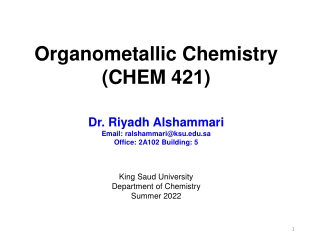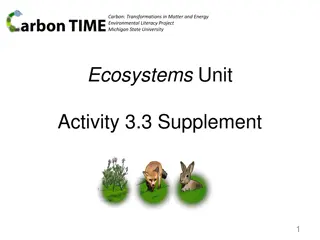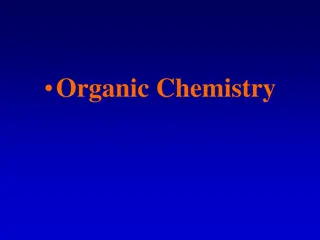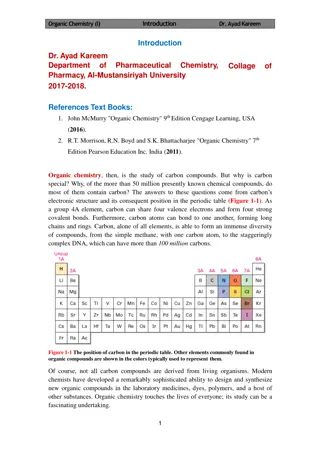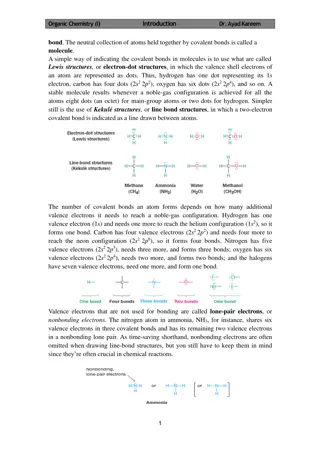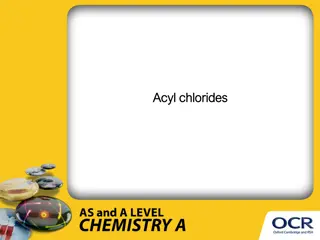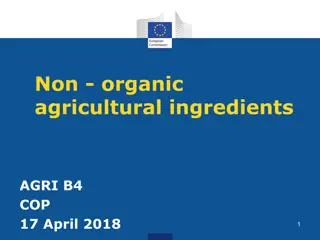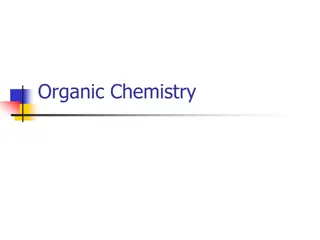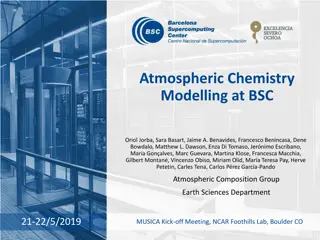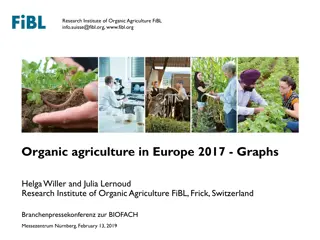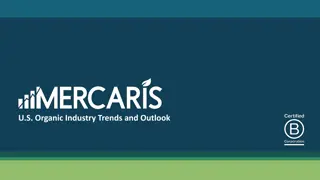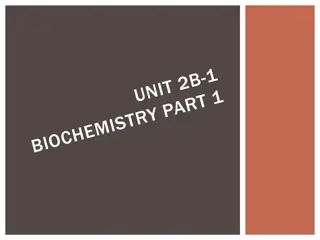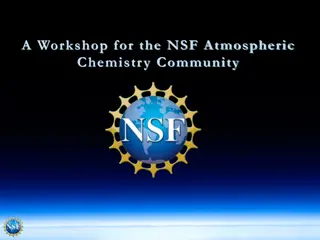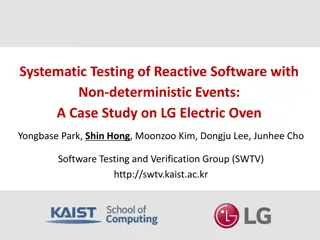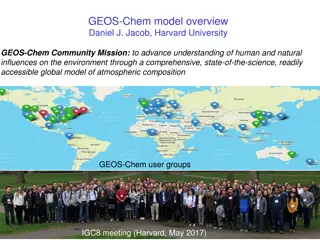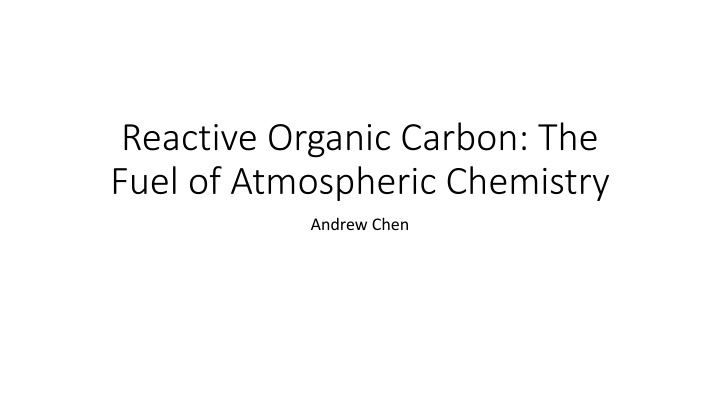
Reactive Organic Carbon: Fueling Atmospheric Chemistry
Reactive organic carbon (ROC) plays a pivotal role in atmospheric chemistry, contributing significantly to secondary product formation affecting air quality and climate. ROC is a complex class of molecules subject to intricate oxidative processes, leading to the formation of ozone, CO2, and organic particulate matter. Challenges in understanding ROC include measurement difficulties and modeling complexities. Innovative techniques have aided in a more comprehensive understanding of atmospheric ROC than previously achievable.
Download Presentation

Please find below an Image/Link to download the presentation.
The content on the website is provided AS IS for your information and personal use only. It may not be sold, licensed, or shared on other websites without obtaining consent from the author. If you encounter any issues during the download, it is possible that the publisher has removed the file from their server.
You are allowed to download the files provided on this website for personal or commercial use, subject to the condition that they are used lawfully. All files are the property of their respective owners.
The content on the website is provided AS IS for your information and personal use only. It may not be sold, licensed, or shared on other websites without obtaining consent from the author.
E N D
Presentation Transcript
Reactive Organic Carbon: The Fuel of Atmospheric Chemistry Andrew Chen
Relevance of Reactive Organic Carbon Carbon dioxide (CO2), ozone (O3), and particulate matter (PM) are central to atmospheric chemistry Reactive organic carbon (ROC) is defined as all atmospheric organic species excluding methane Includes volatile organic compounds (VOCs) and other lower-volatility organics ROC is the single largest contributor to total reactive emissions that lead to secondary products of interest for air quality and climate (Heald 2020)
Complexity of Reactive Organic Carbon ROC is an enormous class of molecules (>100,000) Each one is subject to a complex assortment of atmospheric oxidative processes Primary ROCs oxidized, then subsequent chemistry proceeds with peroxy radicals (RO2) and can form ozone, CO2, and secondary ROCs (Heald 2020) Secondary ROCs highly complex and can condense and form organic PM
Understanding ROCs Traditionally, ROCs are confronted by looking at individual components. Specific individual oxidation steps are studied in the laboratory, or the sources/sinks of a specific organic component, like formaldehyde. (Fortems-Cheiney, F. 2012) Issue: omits unknown/unmeasured/entire classes of compounds and ignores possible interactions between these compounds Low volatility gas-phase organics, which are not easily detected, were only recently identified as a major class of ROCs (A. L. Robinson, 2007) Early studies of organic PM were similar, but measurements revealed that simple descriptions underestimated organic PM loadings.
Challenges in Understanding ROC: Measurements Development of online techniques have been beneficial for temporal resolution Characterizing species not found purely in gas phase or condensed phase, but can transfer, is a significant challenge. They tend to be lost to surfaces and have low concentrations. (Robinson 2007) Improvement in these areas have led to a more complete description of atmospheric ROC than previously possible (Heald 2020)
Challenges in Understanding ROC: Modeling Most chemical mechanisms with 3D models reduce explicit schemes, which are based on laboratory studies (thus, focus on some but not all products) (Whitten 1980, Horowitz 1998) Formation of minor products not often tracked, and chemical species often lumped (i.e. all alkanes with four or more carbon atoms) leading to some ambiguity in carbon number, molecular weight, and imperfectly balanced chemical reactions Gaps in understanding in oxidation still exist in the atmosphere, so until these laboratory measurements/experiments finish modeling will not be fully accurate
Moving Forward: Perspective on Modeling Two previous modeling attempts of ROC budgets have looked at only VOCs (Folberth 2005) or focused on organic nitrate and phosphorous (Kanakidou 2012) Study by Safieddine et al. attempts to construct a holistic simulated budget of known ROC in the global troposphere using a 3-D chemical transport model Provides insight on the flow of ROC in and out of the atmosphere, and opportunity to use observations to identify flaws in the lifecycle representation of ROCs
Model Description and Changes The global chemical transport model GEOS-Chem v9-02 was used with modifications to develop first ROC global budget Chemical mechanism for description of HOx-NOx-VOC-O3-BrOxincludes 123 species and 357 reactions, including 64 photolysis reactions. (Bey et al., 2001) Removal of gases and particles from wet and dry deposition. Emissions are input from various sources and calculations. Added complete mass tracking of all reactive carbon species including short-lived intermediates and added wet/dry deposition where possible. (Saffieddine, 2017) Ensured carbon closure in all reactions included in the GEOS-Chem mechanism and added 53 species and 97 chemical reactions, including 11 photolysis reactions (gas-phase chemistry of aromatics and monoterpenes, etc.)
Results: Annual Mean Global Distribution of ROC/OH Column Concentrations
Uncertainties Not a complete simulation of all ROC sources and transformations Computational limitations make it likely that the level of chemical detail is limited Omitted poorly understood/constrained sources and transformations such as intermediate volatile organic compounds and precursors of SOA Modeling scheme does not describe some chemical transformation relevant to SOA Uncertainties remain large
Conclusions Holistic modeling perspective using GEOS-Chem v9.02 on the budget of known ROC provides insight into the composition and fluxes of the global ROC budget. The global annual mean ROC burden of 16 Tg C is dominated by species with long lifetimes, such as ketones, acids, alkanes, alkenes, and aromatic carbons. Aldehydes and isoprene are the foremost ROC contributors to global OH reactivity. The uncertainty of this model is estimated to be within 15%. Uncertainties on emissions, deposition, and chemical oxidation are the uncertainties that are not well characterized.
Works Cited A. Fortems-Cheiney, The formaldehyde budget as seen by a global-scale multi-constraint and multi-species inversion system. Atmos. Chem. Phys., 12, 6699-6721 (2012). A.L. Robinson et al., Rethinking organic aerosols: Semivolatile emissions and photochemical aging. Science 315, 1259-1262 (2007). G. Folberth, D.A. Hauglustaine, P. Ciais, J. Lathiere, On the role of atmospheric chemistry in the global CO2budget. Geophysical research Letters. 32 (2005) G. Isaacman-VanWertzet al., Chemical evolution of atmospheric organic carbon over multiple generations of oxidation. Nat. Chem. 10 10, 462 468 (2018). G. Z. Whitten,H. Hogo, J. P. Killus,The carbon-bond mechanism: A condensed kinetic mechanism for photochemical smog. Environ. Sci. Technol.14, 690 700 (1980). L.W. Horowitz, J.Y. Liang, G.M. Gardner, D.J. Jacob, Export of reactive nitrogen from North America during summertime: Sensitivity to hydrocarbon chemistry. J. Geophys Res. Atmos. 103, 13451-13476 M. Kanakidouet al., Atmospheric fluxes of organic N and P to the global ocean. Global Biogeochemical Cycles, 26 (2012). S.A. Safieddine, The global nonmethane reactive organic carbon budget: a modeling perspective. Geophysical Research Letters. 44 (2017).

